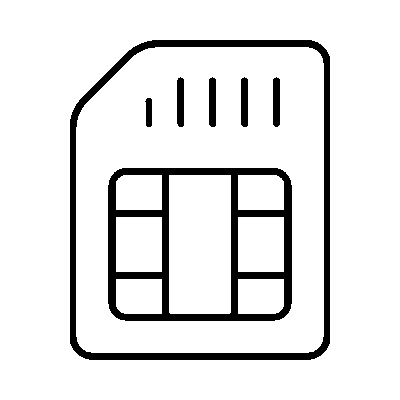Greenhouse monitoring
Digital Technology for Healthy Plant and Aquatic Life
Your greenhouse, hydroponic, and aquaculture farms need to be cared for, just like your plants and aquatic life. Greenhouses and these types of farms and facilities require regular upkeep to maintain compliance standards and foster optimal conditions for growth. Water Leaks and open doors are easy to handle, but it’s easy to get overwhelmed working to maintain consistent, optimal temperature and humidity levels. This is where our Wireless Sensors connected to the Internet of Things (IoT) can help with the best solutions for remote greenhouse monitoring, hydroponic monitoring, and aquaculture monitoring.
Related Wireless Sensors unburden you from worry. Gone are the days when concern over excessive humidity, soil moisture, and temperatures keep you up at night. We take greenhouse, hydroponic bag and bottle, and aquaculture cage and tank conditions off your mind and puts them on your phone.
Our Sensors deliver alerts via email, text, or voice call according to thresholds and settings you set within a secure cloud-based software in the event of an issue. we keep your growing facilities as healthy as a flower in full bloom.
What we provide
Sensors
Gateways
Monitoring platform
Recommended Sensors
The benefits of Carbon Dioxide (CO2) in greenhouses and hydroponic systems are clear. It supplements photosynthesis and production. As your plants use CO2, that will cause gas levels to drop, and a significant enough drop could significantly affect your bottom line. You can receive instantaneous alerts and 8-hour, time-weighted average readings. Our Wireless CO2 Sensor will alert you if levels are detected above or below ideal settings whether you’re in the workplace or sound asleep at home.
Maintaining a strong seal on doors and windows is key to keeping environmental conditions in your greenhouse, aquaculture, or hydroponic operations steady. The best way to accomplish this is with a related Wireless Open-Closed Sensor. Connectivity with a magnet sends an “open” or “closed” alert immediately to your phone. The key to keeping your greenhouses and hydroponic and aquaculture farms operating at peak efficiency with easy-to-read charts and adjustable settings.
We provide a wide assortment of temperature sensors for any environment. The Standard Temperature Sensor delivers readings in even the harshest of weather conditions with a measuring range of -40°C to +125°C ( -40°F to +257°F ) and optional weatherproof housing. It’s not only an ideal greenhouse temperature sensor; it’s an essential sensor in aquaculture and hydroponic monitoring solutions too. Readings are digitally logged, time-stamped, and graphed for easy assessment in compliance with any regulation.
Managing relative humidity (RH) and maintaining optimal 50% to 70% RH levels is difficult. Trusting remote monitoring of your greenhouse and hydroponic and aquaculture facilities with our Wireless Humidity Sensor is the best way to foster healthy environments. The Humidity Sensor monitors RH with a +/- 3% accuracy, plus temperature and dew point.
Managing relative humidity (RH) and maintaining optimal 50% to 70% RH levels is difficult. Trusting remote monitoring of your greenhouse and hydroponic and aquaculture facilities with the Wireless Humidity Sensor is the best way to foster healthy environments. The Humidity Sensor monitors RH with a +/- 3% accuracy, plus temperature and dew point.
Monitor photosynthetically active radiation (PAR) saturation from sunlight and lighting in your greenhouses with our PAR Light Meter. You’ll know the intensity and the amount of light within the PAR spectrum (389 to 692 nanometers) your crops receive throughout 24 hours. Get valuable photosynthetic photon flux density (PPFD) and Daily Light Integral (DLI) measurements instantly with the PAR Light Meter. Then you can optimize lighting based on canopy conditions to maximize crop quality, yield, and ROI.
Everything that transports water is prone to leaking or cracking at some point in its lifecycle. Using our Wireless Water Detection Puck to monitor your pipes and irrigation equipment raises the alarm whenever water is detected. A Wireless Water Rope Sensor can be placed along walkways, walls, and pipes to detect water and help prevent damage from a leak. Our Water Detection Sensors can be configured to detect the presence or non-presence of water.
Are there areas of your operation that are off-limits to all but a select few? Or are you just worried about unapproved activity after hours? The Wireless Motion Detection sensor uses passive infrared (PIR) technology to sense movement. The sensor’s a perfect addition to our monitoring systems. You can set the device, so it is only active during off-work hours. That’s the security and peace of mind we can bring you every day.
Measure soil water tension and temperature in your greenhouses with our Soil Moisture Sensor. You’ll know how much and when to water your crops or plants to prevent water stress and increase yield throughout your growing operations with this ideal greenhouse monitor. The two-in-one sensor features a resistive granular matrix element to measure soil water tension and a thermistor-based temperature element. It’s easy to install and works within a broad spectrum of environments and temperatures.
The Wireless Resistance Sensor works as an electrical conductivity (EC) sensor to measure hydroponic water solutions’ electric current and conductivity. With a corrosion-resistant submersible lead, the sensor reports analog data calculated into a resistance measurement. This helps you determine the availability of nutrients like salts in hydroponic water solutions. The Resistance Sensor is also helpful in monitoring batteries and equipment used in greenhouse and aquaculture management.

